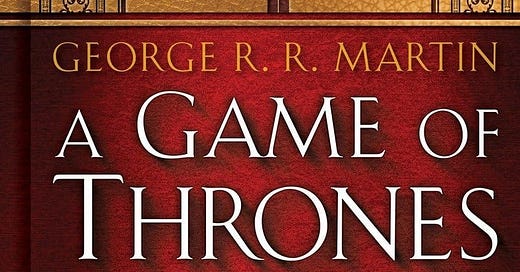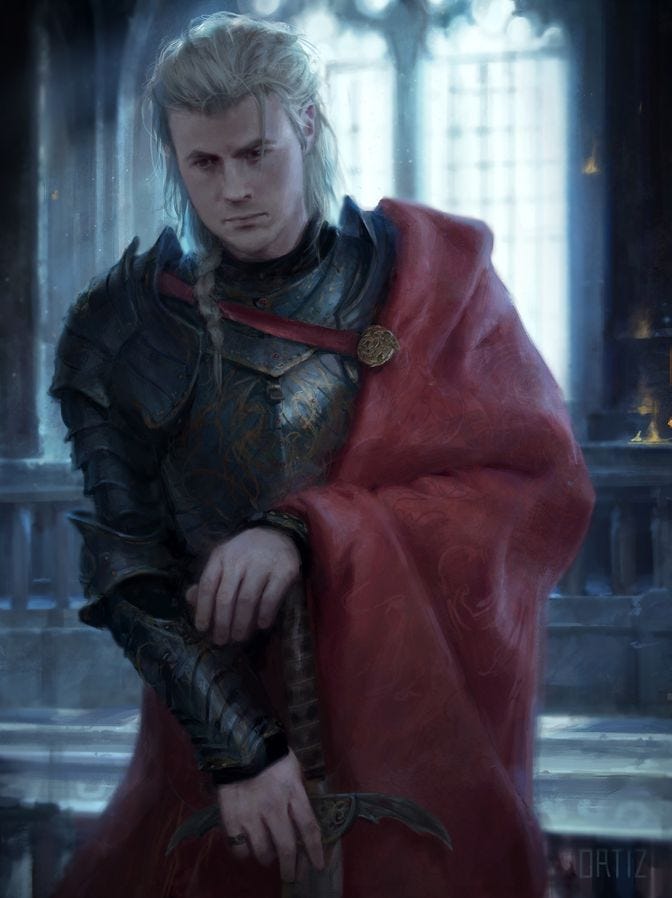Game of Thrones, the pop-culture phenomenon created by George R.R. Martin, was inspired by a real life series of civil wars known as the Wars of the Roses, which took place in the second half of the 15th century.
Like the events of Game of Thrones, the Wars of the Roses featured intermittent military clashes between families of royal bloodlines contending for power in a feudal society alongside the nobility that supported them and the peasantry that suffered their depredations.
Two main differences between GoT and its real life source material are:
The Wars of the Roses took place in England, not Westeros.
There were no dragons in medieval England, they’re just in GoT as a metaphor for nuclear weapons.
Now that we’ve gotten that out of the way, some of the connections are readily apparent. The main families of the GoT narrative are Stark and Lannister. In the Wars of the Roses, the main families contending for the crown are York and Lancaster.
Many of the characters’ names from GoT are not as easily identifiable as those of the main families with any real-life counterparts, but the deeds and backstory are nonetheless derived from important figures from the Wars of the Roses notorious enough to directly influence popular fiction nearly 600 years later.
And while the main focus of Martin’s novels are on the carnage mirroring the Wars of the Roses, he also borrows for purposes of exposition from the events of prior generations whose impact is felt on the later conflicts.
One such character I’d like to touch on is Rhaegar Targaryen. While he does not feature in the main timeline of the GoT novels due to his death before the books and show begin, his life and deeds are detailed in both series’ exposition.
For those who don’t recall (I suspect anyone who doesn’t know who Rhaegar was not to be interested in this topic and thus not have read this far), Rhaegar:
Was the Crown Prince and heir of his Father, King Aerys II
Wore a black suit of armor
Was considered by his contemporaries to be a valiant warrior and a decent and honorable man, and was nearly universally respected
All in all, he was considered a model lord and person and his impending ascent to the Iron Throne was eagerly anticipated. Alas, it was not to be, as Rhaegar was felled in single combat at the Battle of the Trident by Robert Baratheon, his competition for the love of Lady Lyanna Stark and the eventual usurper of Aerys’ crown.
There is one man who serves as the clearest influence on Rhaegar’s character; Prince Edward of Woodstock, also known as the Black Prince. The son and heir of King Edward III, Prince Edward was known, among other things, for his exploits on the battlefield, having most notably led the English to a victory over the French at the Battle of Poitiers during the Hundred Years War (a prelude to the Wars of the Roses), despite leading a vastly inferior force and capturing the French king John II in the process.
He shared much in common with Rhaegar Targaryen, as he:
Died during events prior to the civil war
Was the heir apparent of the reigning king until predeceasing him
Was purported to wear a black suit of armor, the supposed inspiration for his epithet “the Black Prince.
A model of chivalry, an accomplished battlefield commander, and universally admired among his contemporaries
One of the greatest knights of his age
There are probably more similarities I could dig into, but I think you get the idea. Of course, Edward merely serves as inspiration for Rhaegar, and Rhaegar was not intended to be his exact duplicate. If authors did that their novels would just be history textbooks.
There are many aspects of Edward’s life Martin tweaked to make an original character. For instance, Edward was not the protagonist of a doomed romantic subplot. While a noteworthy and unique figure, much of his life was also rather mundane and differs from Rhaegar’s story in many ways:
Rhaegar was killed in heroic fashion, fighting for the woman he loved and his family in single combat on a battlefield. Edward died of dysentery after a long battle with the illness.
Rhaegar’s death heralded the downfall of his dynasty and the murder of his family. Shortly after Edward’s death his father, Edward III, died from natural causes, and Edward’s son succeeded his grandfather as King of England without challenge as Richard II.
While Edward’s dynasty, the Plantagents, were guilty of some inbreeding (e.g., Edward married his cousin), they never practiced sibling marriage like the Targaryens.
Edward III, was a warrior king who ruled for 50 years. While opinions differ on the quality of his reign and its impact on English history, no one believes he was a madman like Aerys II.
Fans of the show and books will all agree George R.R. Martin tells a great story full of layered, complex characters in a richly developed and historied world. While his narrative is certainly original, it nonetheless borrows from another epic tale, one that really happened.






